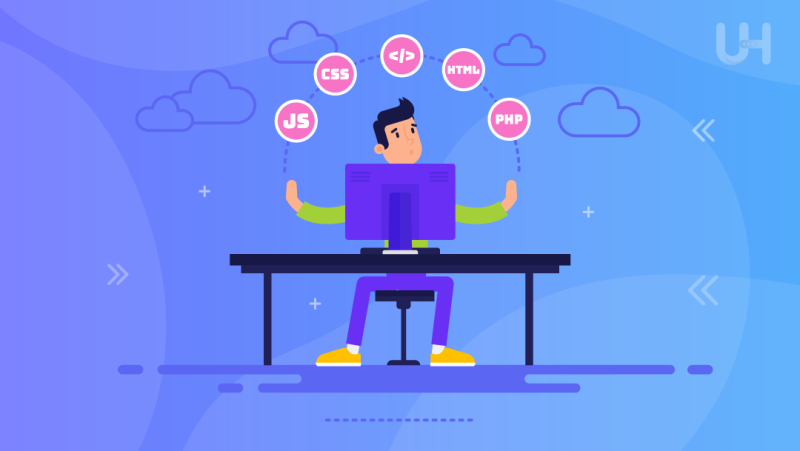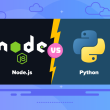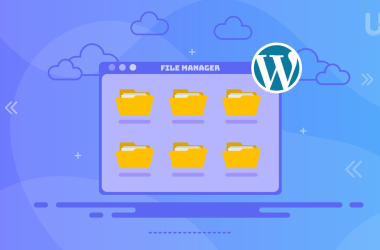A full-stack developer’s role is critical and often misunderstood in this dynamic world of web development. As technology evolves, understanding these developers’ comprehensive role is beneficial and essential for anyone involved in the tech industry, from business leaders to software engineers. This article delves into their multi-faceted responsibilities and skills, highlighting the urgency of this knowledge.
Further discussions will enlighten you on the various aspects of full-stack development, from the fundamental idea of “full stack” down to the specific daily activities of such developers and the specialized tools and environments. Let’s remove the layers and bring out the full-stack developer, a backbone of smooth, effective, and robust web application building, underscoring their significance.
What is a Full-Stack Developer
A full-stack developer is the epitome of the middle ground between design and functionality in web development. Such developers are equipped with knowledge of numerous coding languages, frameworks, and technologies in the market. They can engage in every stage of software development, from concept and design to implementation and troubleshooting. This makes them vital in the development life cycle since they can easily switch from or to any development stage and contribute to the advantages of offshore software development or in-house coding team.

What Does “Full Stack” Mean?
The term “full stack” refers to the “technology stacks,” the whole set of technologies that a project requires in its completion, on the front and back end. The front end is the component that interacts with the users. It is everything that a user experiences directly, such as web pages, graphics, and the user interface. The back end is the server side, where data is stored and maintained, composed of the server, databases, and applications that run on the server. A full-stack developer with working knowledge of both fields can build a fully functional and interactive website from scratch.
What Does a Full Stack Developer Do?
A full-stack developer works between front-end and back-end development, managing both in detail. This way, he can do anything from developing user interfaces to handling databases and servers. The general responsibilities of a full-stack developer include:
Front-End Development Skills
Full-stack developers can develop attractive, user-friendly, and functional user interfaces; they mainly use HTML, CSS, and JavaScript frameworks. Since these developers are front-end developers, the websites they developed have visual appeal, and users can comfortably achieve their goals. It is ensured that the websites they developed, using the latest responsive designing techniques, will perform seamlessly across many devices and browsers without compromising aesthetics or functionality.
This expertise not only enhances the accessibility and usability of websites but also significantly boosts user engagement. Hence, full-stack developers are all about digital interfaces for users to get the best of consistently nice experiences, whether attractive or efficient, on any platform they might use. The power of such developers lies in integrating responsive design, making websites more adaptive and user-centric. It thus ups the reach and impact factors through web applications over the diverse tech landscape of today.
Back-end development and Database Management
They employ server-side programming languages like Python, Node.js and PHP to build full-fledged dynamic web applications. The developers understand these technologies well, so their systems can efficiently handle large datasets and intricate transactions. Mastering these languages will provide solid functionalities and proper interaction between the user interface and the server.
A full-stack developer can easily handle complex operations on the database with tools such as SQL or MongoDB. Work on efficient designs of database schemas, optimized query writing, and data retrieval tuning for better performance and scalability. This skill is paramount to assembling robust backend systems with high loads and sophisticated user activity, ensuring data integrity and speedy access to information. Their strategic approach to database management enables them to provide the result obtained, an efficient, scalable, and dependable web application that would meet the needs of businesses and users with growing demands.
API Integration and Security
Full-stack developers are involved in designing and extensively using application programming interfaces (APIs) to make the communication process more accessible for application parts and services. This can only be effective if the front-end and back-end systems are integrated well to have proper data flow throughout the application’s architecture. Their knowledge in the management of APIs enhances the performance of web applications and makes them interoperable, leading to higher flexibility and capability in integration with other services and platforms. Partnering with a provider of custom API integration services can further optimize these integrations, ensuring seamless communication between different systems and enhancing overall application performance.
In addition to the application’s developmental tasks, the developers have stressed security. They implement very stringent security protocols, which include data encryption, secure coding practices, and regular updates, to ensure that the application is not prone to potential threats. Such comprehensive security will only ensure the integrity and confidentiality of data, ensuring the robustness and safety of users.
Scalability and System Optimization
One role for a full-stack developer is to consider all possible up-scaling assurances, from front to back-end, in the tech stack for growing user demand. By optimizing website performance, they enable systems to process more traffic and data faster to ensure a smooth user experience. This ensures that interactions are kept efficient and responsive while the user number grows.
This holistic approach to development encompasses all necessary project management to increase web applications’ overall efficiency and resiliency. Full-stack developers zero in on general and specific aspects of a system’s architecture, which, in their effective development strategy, ensure the applications are robust and flexible to new demands. Such foresight of the development strategy underpins sustained performance and long-term functionality.
Looking For a Fast Hosting for Web Development!
Are you a full-stack developer seeking faster application performance? Explore Ultahost’s NVMe VPS, which can elevate your projects with unmatched speed and reliability.
VPS Solutions Used by Full Stack Developers
VPS solutions are an integral part of the full stack developer, approached resourcefully for hosting an application. These may include storage VPS, managed VPS, and unmanaged VPS hosting, and they will cater to the different needs and technical expertise levels required.
Storage VPS
A storage VPS solution can be very handy for any full-stack developer who needs to hold massive amounts of data. It works well for those applications that require a lot of data to be saved and retrieved. Other times, developers who resort to large databases or media files often need a storage VPS.
Managed VPS Hosting
Managed VPS hosting is the most favored option by full-stack developers who want to balance time and efficiency. This means that a hosting provider will take the role of the server administrator, performing updates, security patches, and technical support so that developers can focus more on development work rather than server management.
Unmanaged VPS Hosting
Unmanaged VPS hosting offers the highest level of server control for a full-stack developer. This hosting requires advanced technical skills, giving developers maximum flexibility in applying configurations and optimizations that will boost their application’s performance. Such hosting is usually provided for experienced developers who wish full control over the hosting environment.
Conclusion
In conclusion, full-stack developers play a critical role in creating end-to-end web solutions. They bridge the gap between front-end user interaction and back-end server management. Full-stack developers possess enormous competence in both areas, making them priceless in the digital landscape. The dynamic nature of this being a critical role and the fact that technology is a continuous evolutionary process underline the role of the full-stack developer. They need to adapt to new technologies and methodologies, be flexible, and be holistic about web development. That keeps them right at the front of technological change, driving innovation to set the future for digital experiences.
Experience innovation and reliability using Ultahost‘s web hosting for full-stack development solutions. Drive your web development projects forward, exceed expectations, and revolutionize how you build comprehensive web solutions with Ultahost.
FAQ
What languages do full stack developers use?
Full stack developers commonly use HTML, CSS, JavaScript, Python, Ruby, PHP, and Node.js.
Why is VPS hosting popular among full stack developers?
VPS hosting offers the flexibility, scalability, and control that full stack developers need for managing diverse web applications.
How do full stack developers handle security?
They implement security measures like data encryption and secure coding practices to protect applications from threats.
Why does web development need to be scalable?
Scalability allows a web application to accommodate traffic and data volume increments without a decrease in performance.
How do full stack developers improve the user experience?
Full stack developers increase the user experience by making everything work together nicely from front to back, ensuring short load times and responsible design.










